Common Pests
Part 2 of 3
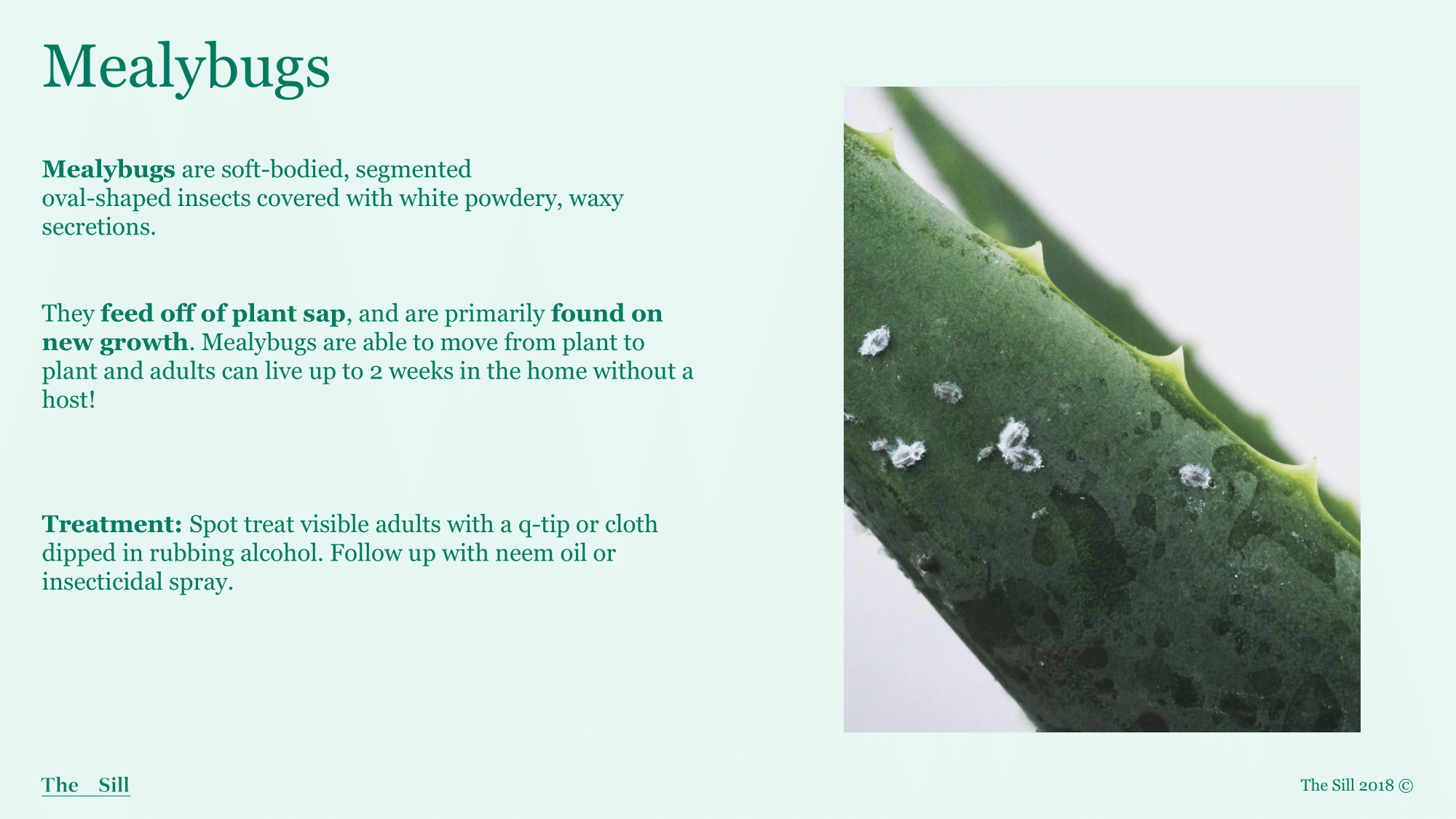
Mealybugs
Continuous and overlapping generations make control difficult once mealybugs become established on a plant. The immature crawlers mature in about 6–9 weeks. Mature females die after egg laying. Unhatched eggs or young nymphs sometimes remain inside the protected cottony sac during unfavorable conditions.
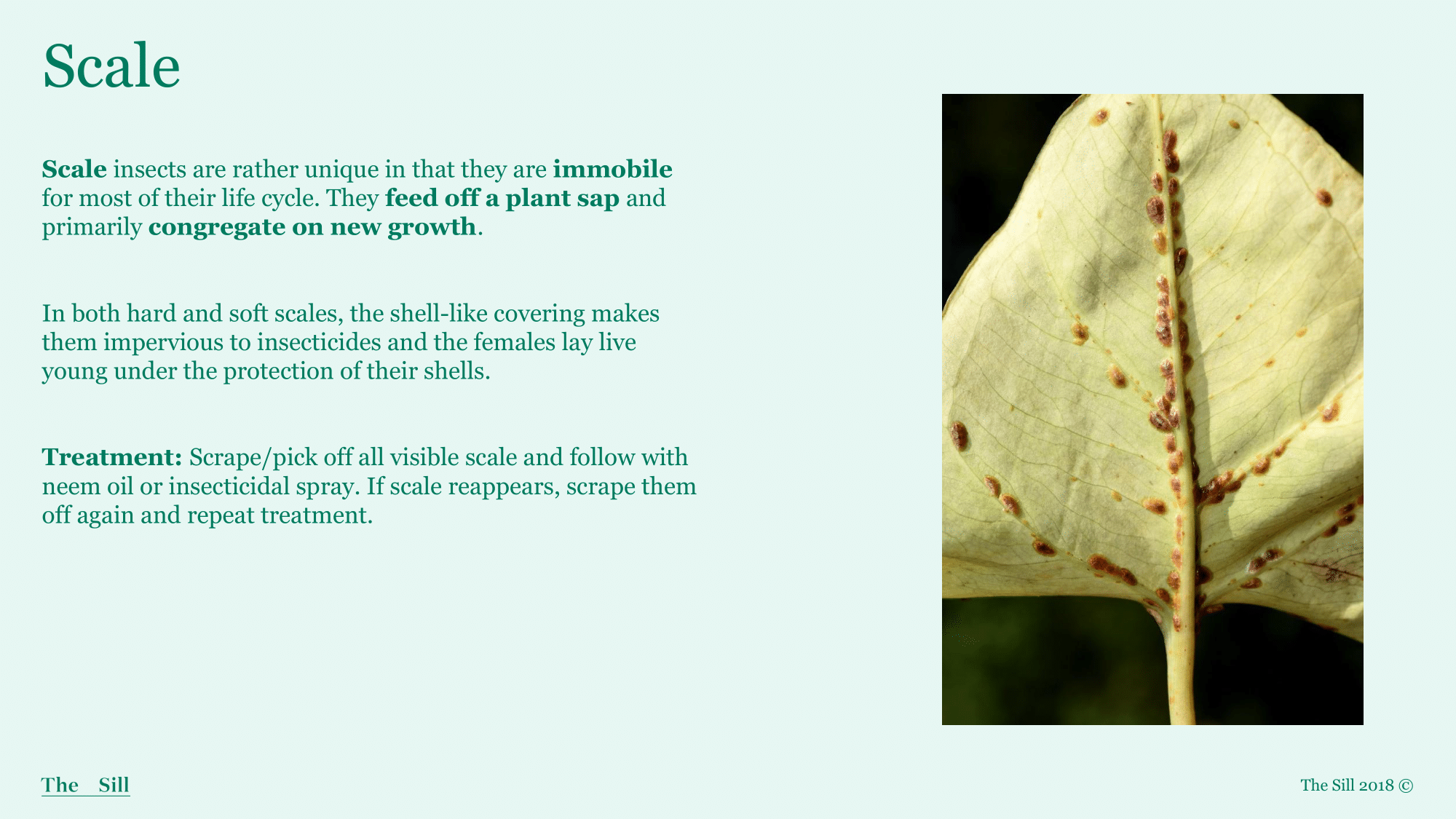
Scale
Some forms produce honeydew, a sticky secretion that draws ants or fungal diseases to the plant. Newborn scales, called the crawlers, occur at first under the protective cover the adult, but soon leave to find a new place to feed. The crawler stage is only active for a short time, but it is this stage that is most susceptible to insecticidal treatment.
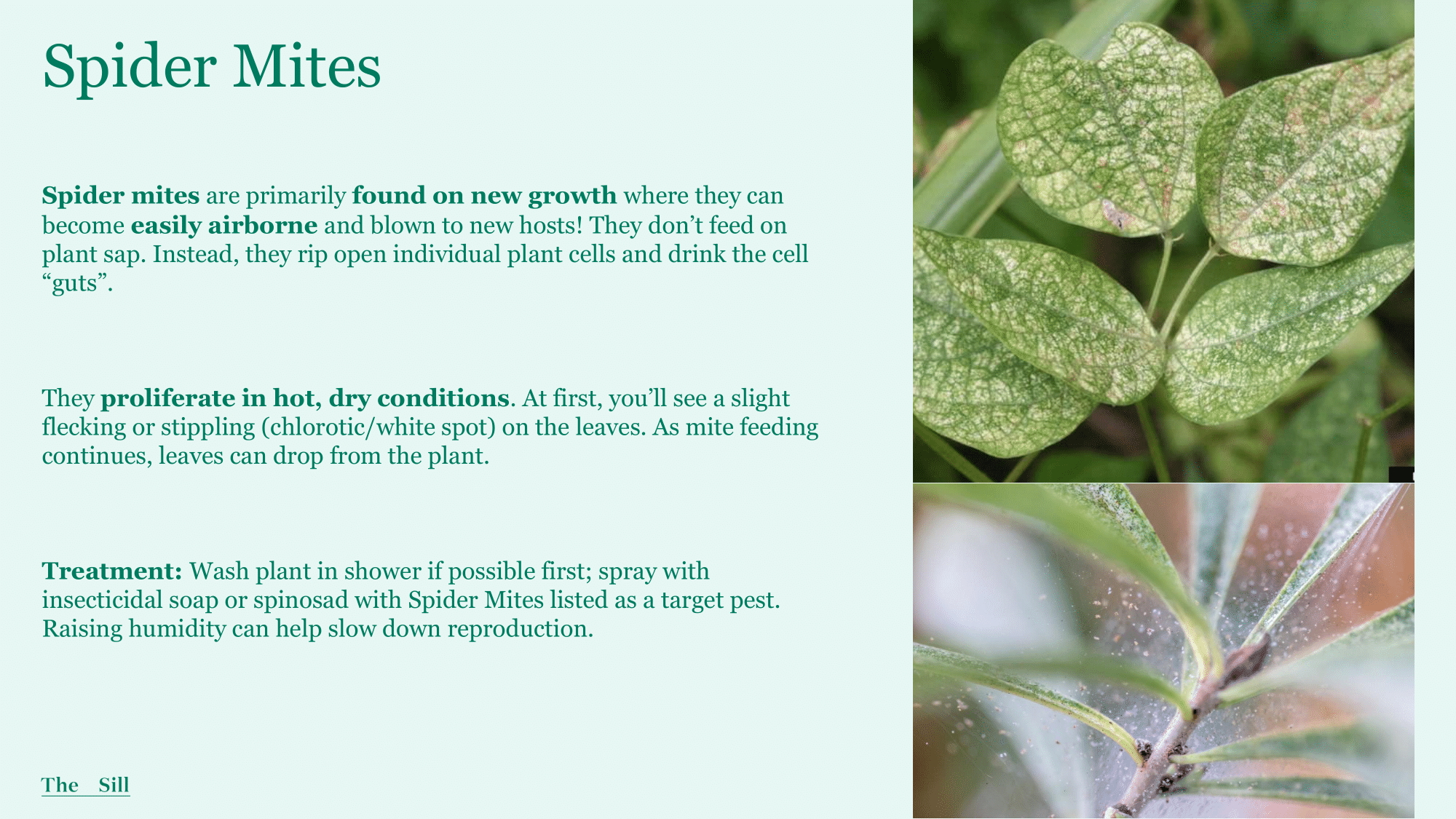
Spider Mites
Small arachnids that feed in plants and are one of the more destructive pests. When high populations develop, fine webbing is extensive. Adult females can live for about one month and lay ~100 eggs and do not have to mate to reproduce. The life cycle from egg to adult can vary from 7–21 days depending on temperatures.
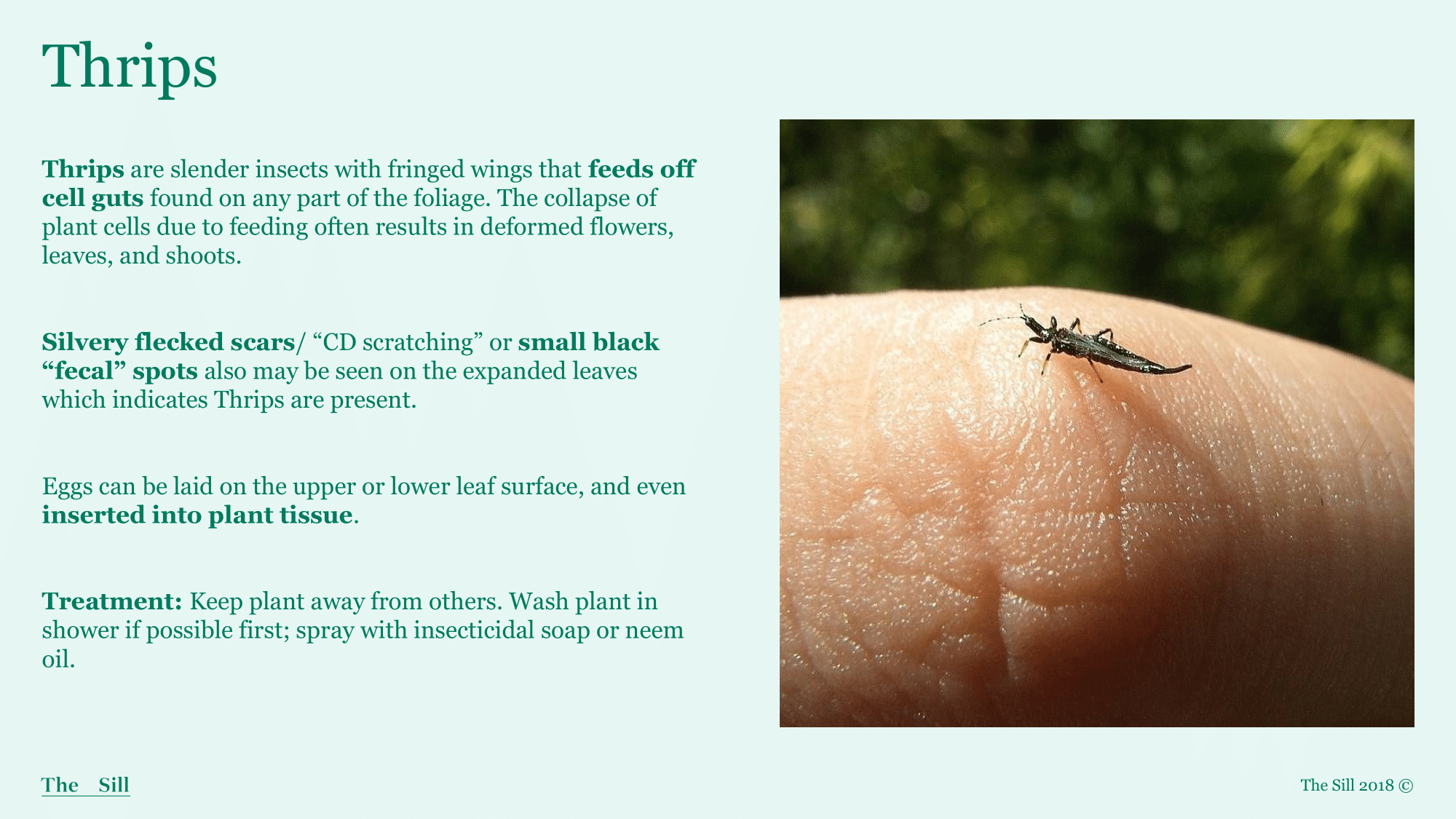
Thrips
Adults are too weak to fly so they usually just hop when disturbed. When possible, keep thrips-infested plants isolated in a separate area to avoid spread. Adult females live for approximately 30-45 days and lay 150-300 eggs that are inserted into plant tissue.
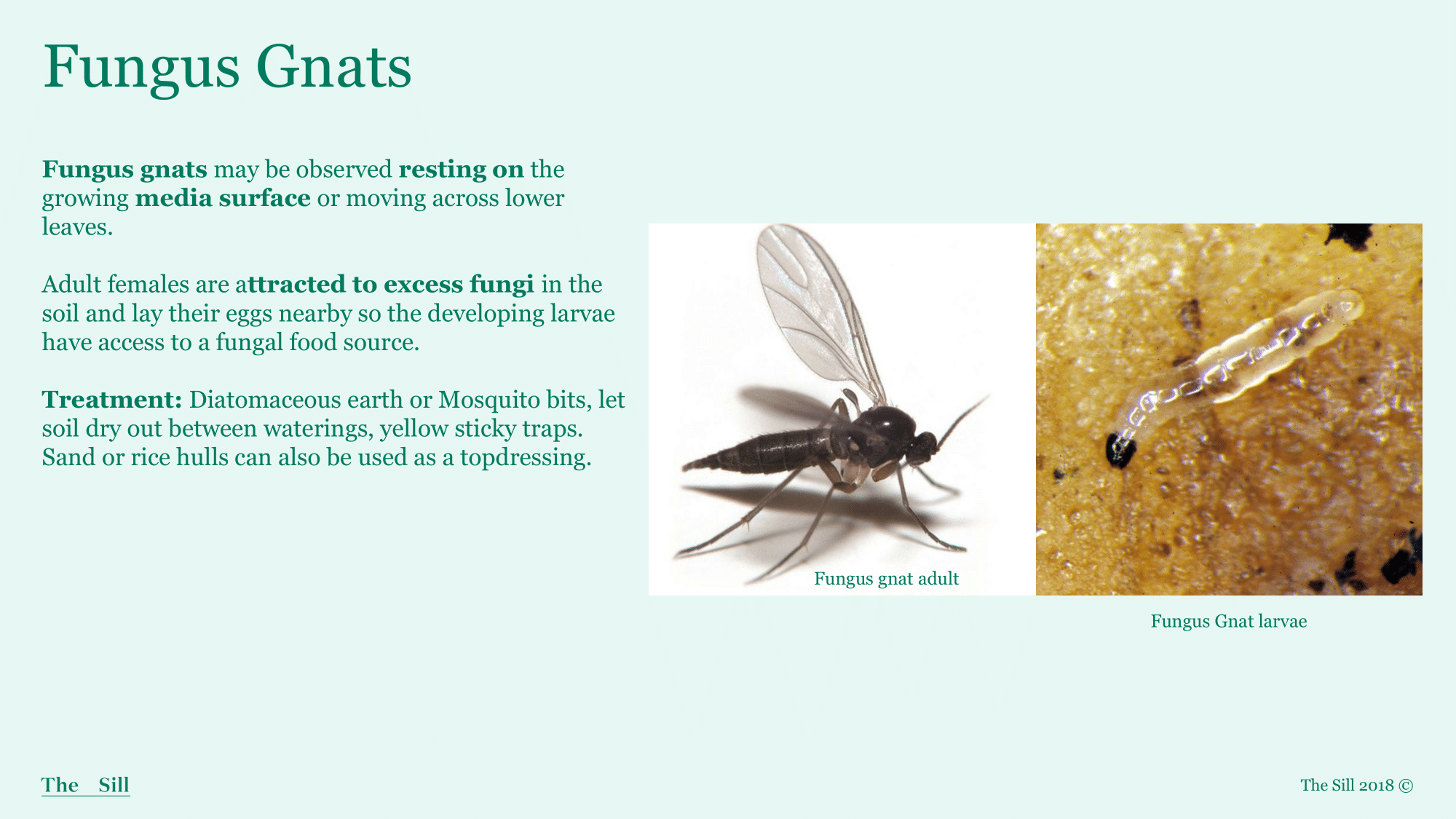
Fungus Gnats
Fungus gnats are generally harmless to our plants as they only feed on decaying organic matter/excess fungi within the soil of our plants. It’s only when the population has become extensive and the food source is not enough where they can feed on fine roots of the plant which is almost rare to see for houseplants and primarily seen in large crop productions.
Since Fungus gnats reproduce quickly and each adult can lay between 100-200 eggs it’s best to start treatment on all plants at the first sight.
